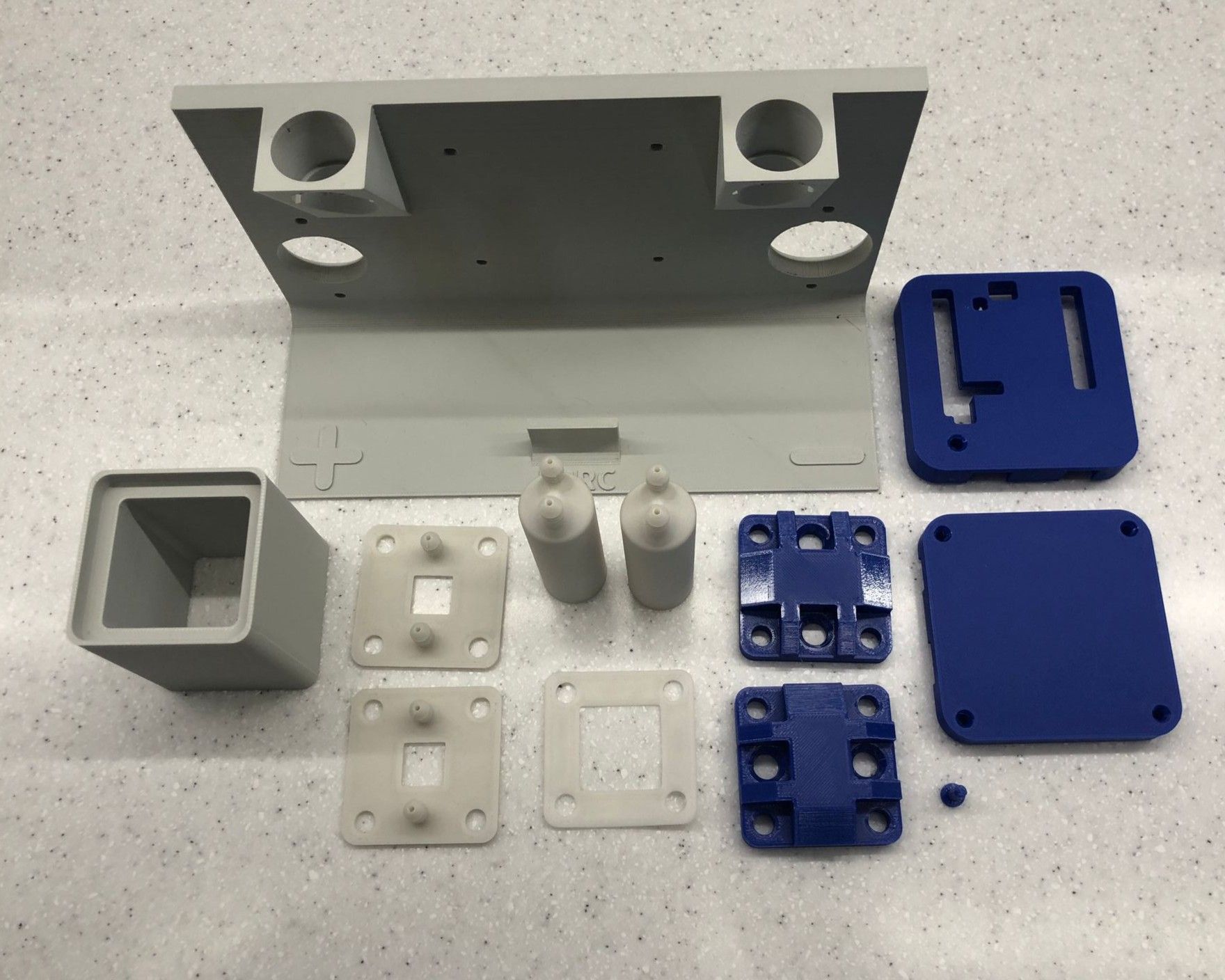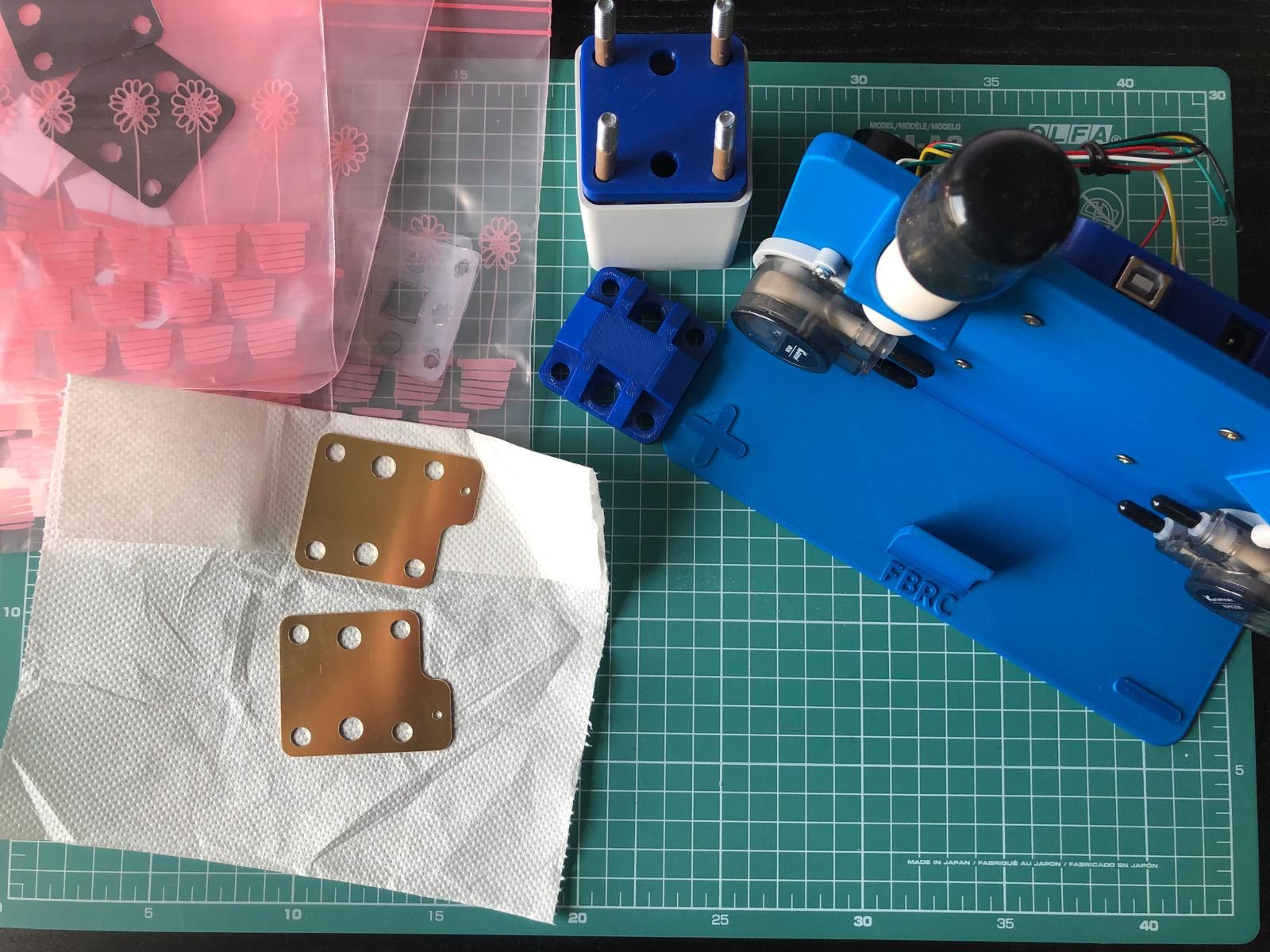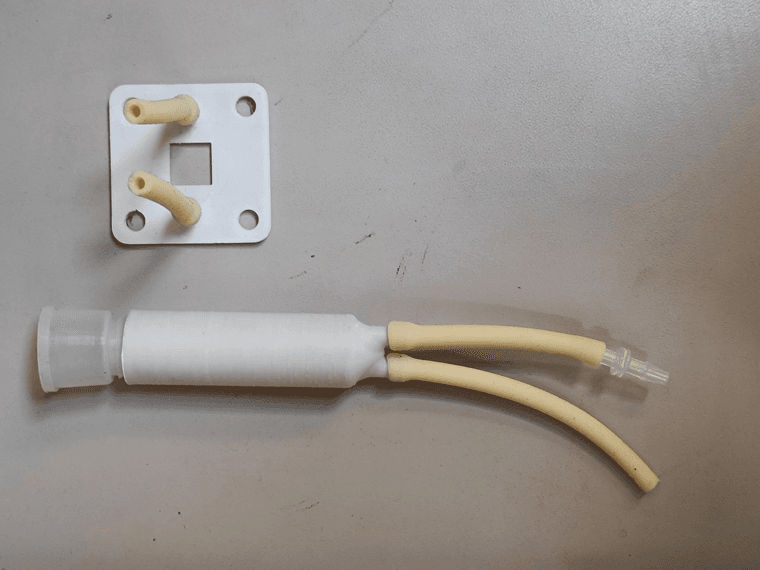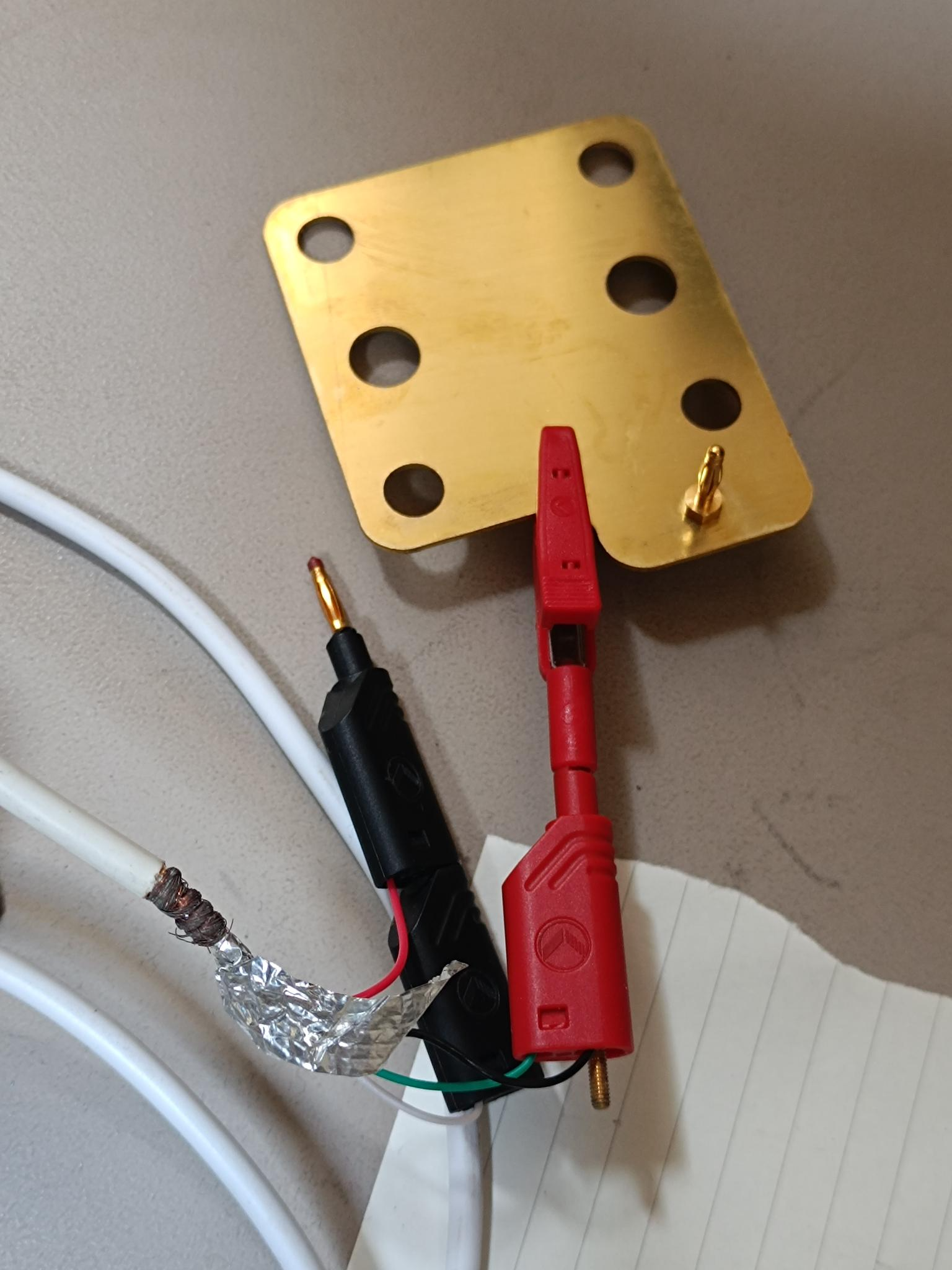Following your documentation – feedback & questions
-
I didn’t want to take over the “New member introduction thread” with my questions, so I’ve started a new one.
At this point, I already have the 3D printed components. I should receive the remaining parts later this month.
One thing I was missing in the documentation was information about the material for the "polymer endplate". In the photo, “PETG 100%” was written on the endplate with a marker, so I used that material and infill.

-
So excited that you're doing this - and those prints look excellent! 100% in PETG is fine for the endplates, probably overkill even. I will make this clearer in the docs.
Are the bottom of the endplates reasonably flat?
You say you've ordered the rest of the components - the pumps/tubing are probably the most important selection and hardest to obtain. Did you have any other issues?
-
 K kirk@social.coop shared this topic on
K kirk@social.coop shared this topic on
-
The bottom of the endplates is perfectly flat. I sprayed the print area with Dimafix to make sure there would be no warping.
The most difficult material to print is PP due to adhesion and warping issues—I used a PP foil for that. What kind of surface did you use to print your PP components? I suspect the most common PP tape could cause leakage issues if a component is printed across the seam between two strips.
All the components are already ordered, including the MYSTAT. My department’s lab doesn’t have such a device.
-
We print on PP packing tape often and haven't had issues with leakage from that to date. There is a great solution here though which people have used with success, less fiddly than PP tape https://www.ppprint.de/produktkategorie/printing-kits/
Some PP filament reels come with a PP foil adhesive surface, is that what you used?
Most often, problems with PP are related to:
- getting it to print at all/not warping
- PP parts that are dimensionally accurate but leak internally/externally due to print settings/any number of reasons - but 100% infill and 5 perimeters seems to work most of the time (it can be filament/printer dependent)
The reservoirs you can leak test now somewhat by filling with water and covering the barbed fittings.
The flow frames can be tested with water once you have the cell hardware + gaskets.
Can't wait for the rest of your parts to come in and see how you get on!
-
@gus I've just realized the pump motor holes in the jig are undersized, I made a mistake in the CAD file. The updated version is here: https://codeberg.org/FBRC/RFB-dev-kit/media/branch/main/CAD/exports/jig.stl
You could also keep your same jig and drill out the holes larger (to about 36-37 mm diameter - largest part of the pump motor housing is about 35.3 mm as delivered), if you have a step drill or similar (Dremel may work but won't be very clean).
-
Hi @gus, thanks again for the great work, and @kirk, I appreciate your clear explanation.
I have already ordered the cell material from the Physics Workshop. However, I'm still having trouble sourcing the gasket film. According to the bill of materials provided on the homepage, it should be ordered from Amazon (France). I placed an order there, but I believe I received the wrong item.
I wanted to ask if either of you has had a similar experience, or if you know of any other reliable sources where I could order the silicone gasket film. I’ve also checked some chemical suppliers like Sigma-Aldrich, Fisher Scientific, and abcr, but I couldn’t find a suitable option.
@kirk, could you please advise if you have any additional suggestions?Thanks a lot for your help!
-
Hi @gus, thanks again for the great work, and @kirk, I appreciate your clear explanation.
I have already ordered the cell material from the Physics Workshop. However, I'm still having trouble sourcing the gasket film. According to the bill of materials provided on the homepage, it should be ordered from Amazon (France). I placed an order there, but I believe I received the wrong item.
I wanted to ask if either of you has had a similar experience, or if you know of any other reliable sources where I could order the silicone gasket film. I’ve also checked some chemical suppliers like Sigma-Aldrich, Fisher Scientific, and abcr, but I couldn’t find a suitable option.
@kirk, could you please advise if you have any additional suggestions?Thanks a lot for your help!
@a.rahimzadegan I think this might be the Amazon NL equivalent - https://www.amazon.nl/Wnuanjun-Nj-Rubber-Siliconen-Breedte-Transparant/dp/B08T84W34C
0.1 mm silicone sheet is what we're looking for but if you have something quite close (like 0.2 mm silicone) it may work for initial testing (just make note of the difference in your experiments).
-
@a.rahimzadegan I think this might be the Amazon NL equivalent - https://www.amazon.nl/Wnuanjun-Nj-Rubber-Siliconen-Breedte-Transparant/dp/B08T84W34C
0.1 mm silicone sheet is what we're looking for but if you have something quite close (like 0.2 mm silicone) it may work for initial testing (just make note of the difference in your experiments).
@kirk Thanks a lot. That Problem has been solved. Do you have any stl File for the inner and outer gaskets?
-
@kirk Thanks a lot. That Problem has been solved. Do you have any stl File for the inner and outer gaskets?
@a.rahimzadegan Here is a PDF which should be usable with most laser cutters: https://codeberg.org/FBRC/RFB-dev-kit/src/branch/main/CAD/exports/Gasket Drawings.pdf
Also the grafoil is hand-cut with a similar shape to the outer gasket: https://codeberg.org/FBRC/RFB-dev-kit/src/branch/main/CAD/exports/Grafoil Drawing.pdf
-
Hi! I already have all the components. I had the brass plates CNC-cut, and I cut the 0.1 mm silicon gasket and grafoil with a knife (I 3D printed a template for that). I noticed that the documentation hasn't yet been updated to include the new Kamoer KPK200 pumps.
@kirk, could you send a photo showing how the tubing is connected (what length should the hoses be cut to?) and what the electrical connections are?
The documentation says to cut 4 separator sheets, but then only 3 are to be used. So is the 4th one not needed?
Also, I assume I don't need to worry about the graphite felt appearing white in your photos? It's not, for example, actually polypropylene felt mistakenly labeled as graphite felt?


-
Hey @gus, looking great!
I will get those tubing lengths to you today - and get to work on updating the docs. I see you printed the updated jig!
A lot of the photos for the documentation need to be retaken... with previous tests we were using a nonconductive felt as a spacer on the zinc side, now we've determined that's not necessary and we just use graphite felt on both sides.
Re. the separator sheets - we had been using 4 sheets of the specified weight of paper (IIRC) or 3 sheets of Daramic 175 (which I assume you don't have).
Were you able to get this tubing? https://fbrc.codeberg.page/rfb-dev-kit/tubing.html If you are in the US I can send you a short length in the mail. Swapping the peristaltic pump tube material over to this is essential for long-term testing.
And you've got the MYSTAT potentiostat? We haven't yet specified the electrical connections, but I personally prefer bullet connectors.
Thanks for being one of the early adopters and being patient as we continue to nail everything down!

I think you can do a leak test with water very soon; I wouldn't test the zinc-iodide chemistry just yet without the proper tubing installed in the pump.
-
the tubing lengths are, for L/S 16 PharMed BPT tubing,
4x 5.5 cm (connect to flow frame barbs)
2x 10 cm (connect to reservoir outlet)
2x 6.5 cm (connect to reservoir inlet, barbed fitting adapter)This is what it looks like for one flow frame and one reservoir:

For electrical connections, these small bullet connectors are ideal, but you need to match them to your potentiostat cables - some folks are using different hardware here so I haven't spec'ed them yet. Alligator/crocodile clips are passable for initial tseting but really not ideal (can lead cause measurement error!). A non-ergonomic but quick fix option is to directly wire the bare MYSTAT wires to the current collectors with a screw.

I'll work tomorrow on updating the docs to reflect all this and spec'ing some hardware, will try to make another video of the cell assembly as well, with all the tubing present
-
Hi! I'm happy to have the opportunity to learn this based on your experience

I'm attaching a photo of my 3.2 x 6.4 mm tubing—hopefully it's the correct one.

It seems that the default tubes in the Kamoer KPK200 pumps are already Pharmed BPT, so I assume there's no need to replace them - is that correct?
Oh, you mentioned a barbed fitting adapter now, but it wasn’t listed in the bill of materials - do I actually need it, or can I manage without it?
And yes, I’m using the MYSTAT potentiostat.
A guide showing how to connect all the cables between the pumps, Arduino, MYSTAT, and the power supply would be really helpful for me.
-
Hi! I'm happy to have the opportunity to learn this based on your experience

I'm attaching a photo of my 3.2 x 6.4 mm tubing—hopefully it's the correct one.

It seems that the default tubes in the Kamoer KPK200 pumps are already Pharmed BPT, so I assume there's no need to replace them - is that correct?
Oh, you mentioned a barbed fitting adapter now, but it wasn’t listed in the bill of materials - do I actually need it, or can I manage without it?
And yes, I’m using the MYSTAT potentiostat.
A guide showing how to connect all the cables between the pumps, Arduino, MYSTAT, and the power supply would be really helpful for me.
@gus said in Following your documentation – feedback & questions:
I'm attaching a photo of my 3.2 x 6.4 mm tubing—hopefully it's the correct one.
You will be able to make connections and leak test using water with this! Also, this tubing can stand up to Zn-I testing, but not within the pumps themselves - see below.
@gus said in Following your documentation – feedback & questions:
It seems that the default tubes in the Kamoer KPK200 pumps are already Pharmed BPT, so I assume there's no need to replace them - is that correct?
Regrettably, for the Zn-I testing, you need to replace the stock tubing in the KPK200 pumps with this tubing: https://fbrc.codeberg.page/rfb-dev-kit/tubing.html , it can also be ordered directly from Kamoer on Alibaba (may be hectic right now with tariffs in case you are based in the US). Warning, the process is annoying, but doable. I haven't documented it yet, only thrown the tubing in the BOM so that people can get it.
However we hope that an all-copper chemistry will play well with the stock BPT tubing, so hang tight on that. That chemistry operates using the exact same principle/hardware as we use for Zn-I and could be more forgiving in terms of chemical compatability.
@gus said in Following your documentation – feedback & questions:
Oh, you mentioned a barbed fitting adapter now, but it wasn’t listed in the bill of materials - do I actually need it, or can I manage without it?
Shoot, I will add this to the BOM - the ones we have leftover from our various pumps we've tested - I need to find a supplier link for just the fitting. For a leak test, you can get by without it, it just makes removing the cell from the jig much more ergonomic. The FDM-printed barbs can be difficult to install the tubing onto, the adapter allows you to break the connection from the cell and the reservoir without removing an FDM-printed barb connection. That way, rebuilding cells goes faster.
@gus said in Following your documentation – feedback & questions:
A guide showing how to connect all the cables between the pumps, Arduino, MYSTAT, and the power supply would be really helpful for me.
Got it, I'm on it!
-
While assembling the flow cell, I noticed that the manual doesn't mention anything about the Membrane Frame. I also have doubts whether the Membrane Frame model provided on the website isn't too thin (0.8 mm) to ensure a proper seal when using 4 membranes made from 230g/m² matte photo paper. Each membrane, according to my measurements, is 0.3 mm thick — which means the total thickness is 0.4 mm greater than the Membrane Frame's thickness. I also used 0.1 mm gaskets (as specified in the Bill of Materials), so such a large difference in thickness is unlikely to be compensated.
@kirk, do I need a thicker Membrane Frame or thicker inner gaskets? -
We have used the Membrane Frame on-and-off through some of our testing as we tested different separator materials and thicknesses. I just went back and checked some old notes, we did a lot of testing with three layers of photopaper in the end, so go ahead and just use three layers for now! I see one section of the docs said four layers and another said three, as well as the old photo.
